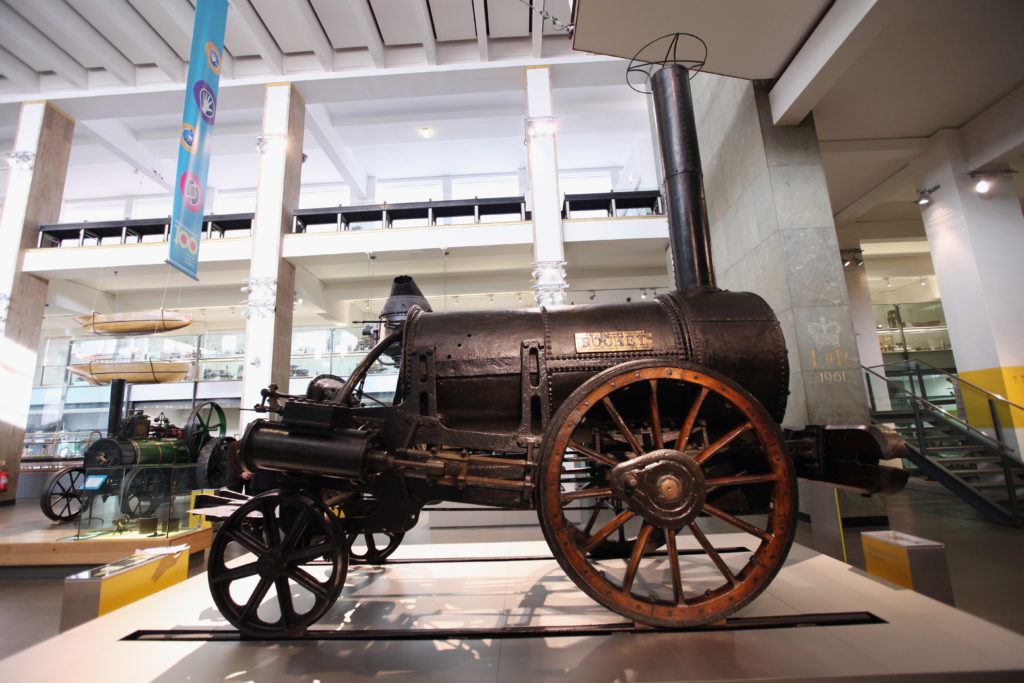The age of steam. Credit: Matt Cardy/Getty Images
Something unusual is happening in Tyneside. At the height of the Summer heat wave, when most of us felt like doing as little as possible, Tynesiders were instead flocking to a museum in the middle of Newcastle – in double their usual numbers. The attraction? Stephenson’s Rocket. On loan to the city’s Discovery Museum from the Science Museum in London until 9 September, the steam engine is part of the Great Exhibition of the North.
Some believe the loan should be permanent. “Stephenson’s Rocket is our Elgin marbles,” says Nick Forbes, leader of Newcastle city council: “It should be here all the time.”
In equating Stephenson’s workaday wrought iron with the marmoreal art of the Parthenon, Councillor Forbes risks hyperbole, but he knows it will get the sympathy of his party leader, Jeremy Corbyn. Mr Corbyn’s views on the Elgin marbles are for him unusually clear: they should be returned to Greece.
But what is so important about Stephenson and his Rocket, and why does Councillor Forbes believe it should stay in the city?
Rocket was a steam locomotive built in 1829 for the new Liverpool and Manchester Railway – the first railway built to carry passengers rather than coal. Rocket was by no means the first locomotive, but she (it’s discourteous to call a steam engine “it”) incorporated several innovations which made her the first engine really capable of hauling passenger trains. Rocket was the template for steam engines for the next century and a half, and is, quite simply, the most famous locomotive in the world.
Rocket was designed and built at the Forth Street works of Robert Stephenson and Company, just round the corner from the Discovery Museum in which she now sits – the first company formed specifically to build railway engines. As such, Rocket is emblematic of the North East’s heavy engineering heritage. Coal mining and ironworking, together with shipbuilding and seafaring, gave “Geordieland” its gritty character – industries now gone.

 Main Edition
Main Edition US
US FR
FR







Join the discussion
Join like minded readers that support our journalism by becoming a paid subscriber
To join the discussion in the comments, become a paid subscriber.
Join like minded readers that support our journalism, read unlimited articles and enjoy other subscriber-only benefits.
Subscribe